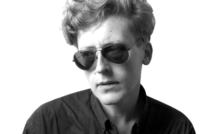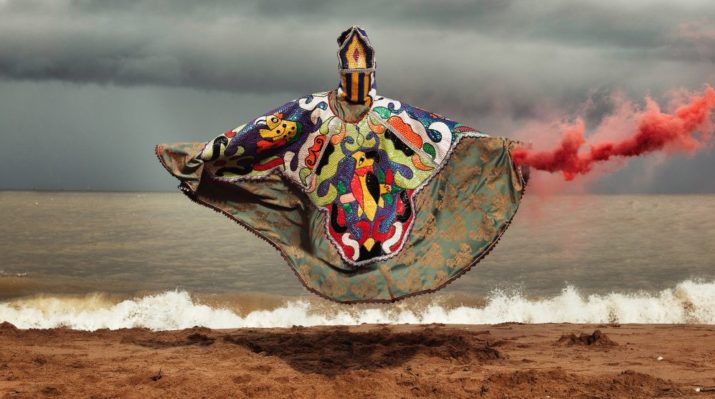
The images in the photography series “Egun” are the manifestation of a long held desire to revisit and unpack formative cultural experiences from the artist’s childhood in Nigeria; encounters with the Egun masquerade. Egungun, (egúngún with proper Yorùbá language tone marks) in the broadest sense of the word, refers to all types of Yoruba masquerades or masked, costumed figures. More specifically, “Egungun” refers to the Yoruba masquerades connected with ancestor reverence, or to the ancestors themselves as a collective force that facilitates communication between the living and the dead. These experiences have lived through the artist into his adult life in the UK. This series of photographs is a response to his journey into recollection and the exploration of his diasporic identity and cultural heritage.
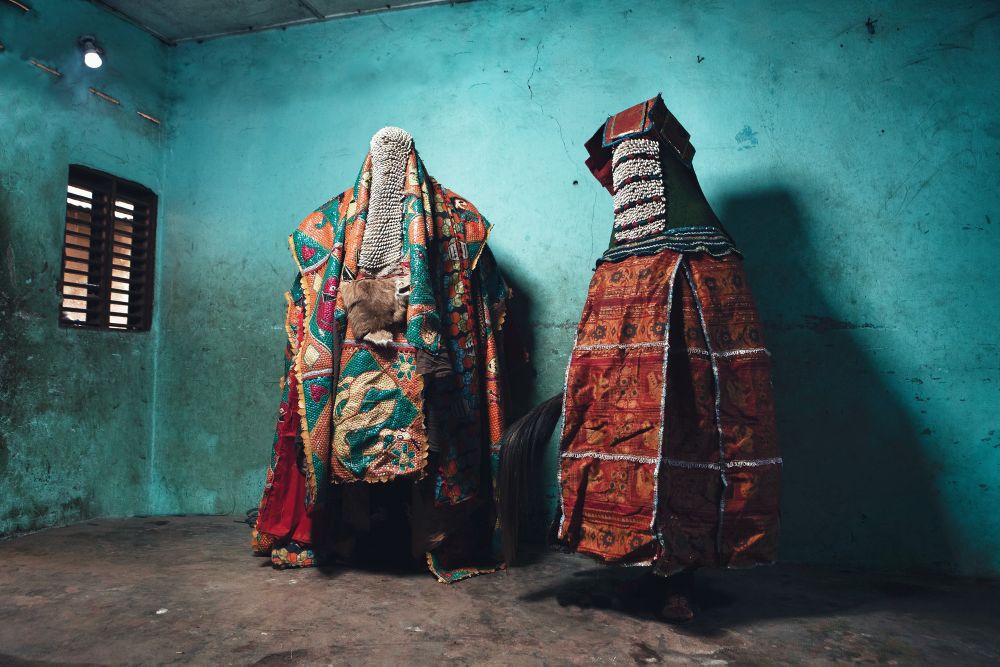
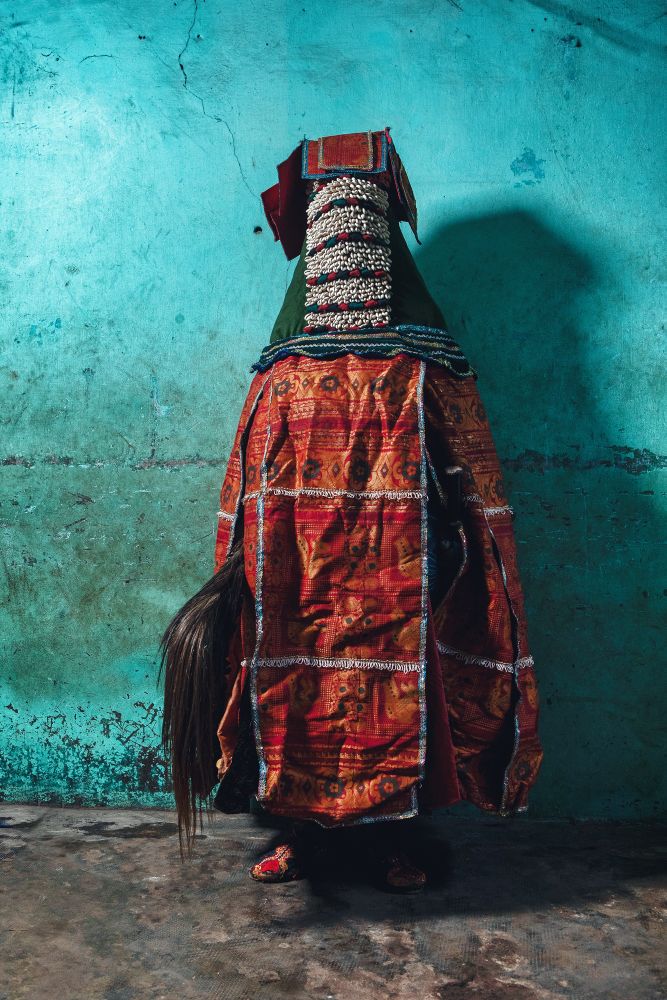
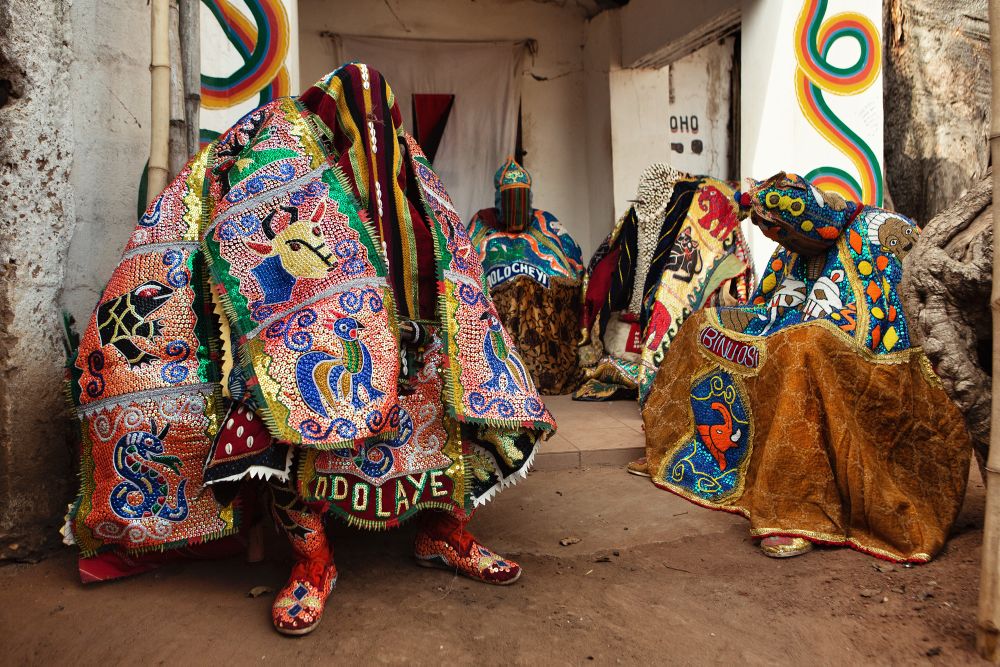
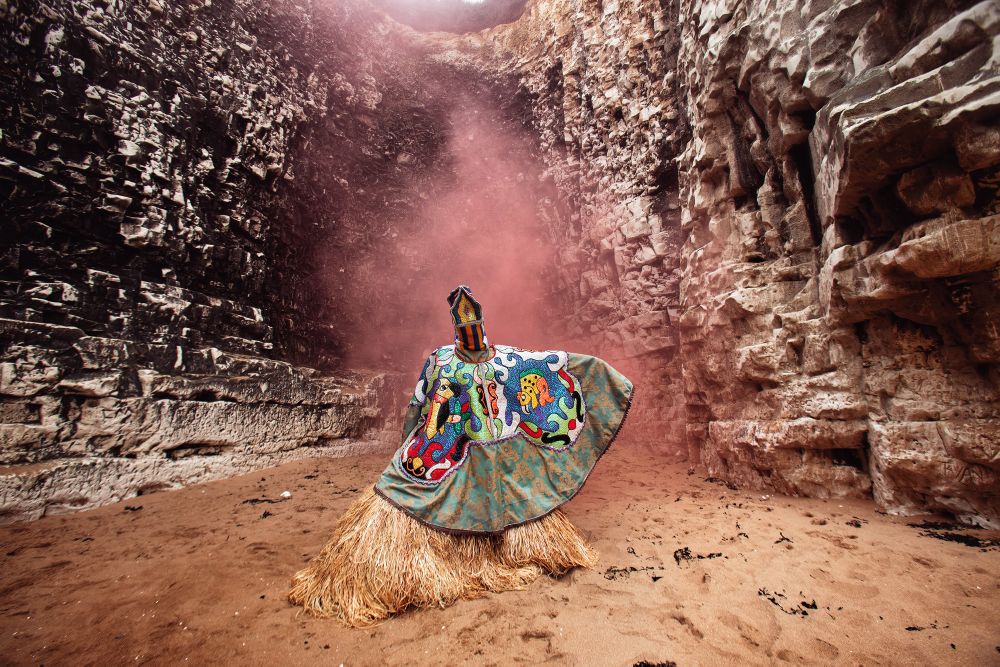
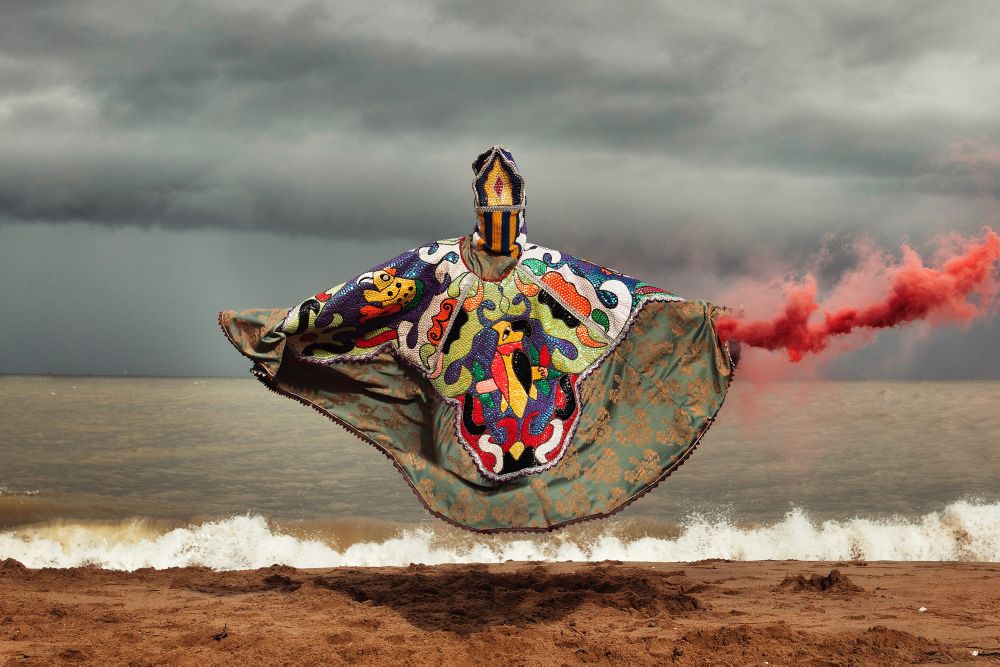
Àsìkò is a conceptual photographer whose practice is anchored by the interpolation of his emotional experiences as a Nigerian born (and raised) British citizen, into a life-long, cultural and spiritual exploration of his Yoruba heritage. His work is motivated by a drive for greater self-awareness, authentic creative expression and therefore the development of a visual language that articulates new ways to understand the liberatory possibilities of African diasporic identity.
As such Asiko’s work is aspirational. His images, although initiated by internal dialogue, seek to instigate public conversations with the audience that can help to negotiate some of the ethical contradictions inherent within modern permutations of Yoruba culture. This is because they are grounded in a wider commitment to faithfully honor and enrich the relevance of this vast and – as yet poorly understood – knowledge system and philosophy to contemporary global society.
He achieves this by employing an intrinsically sensual and feminist approach that centers the body as the subject through which he generates ideas about gendered power dynamics and violence, the limits of femininity and masculinity, spirituality and beauty, our relationship to nature and ultimately belonging. Frequently lacing his visual aesthetic with adornment and choreographed movement, juxtaposed against atmospheric locations, his imagery is imbued with a distinctively seductive charge


